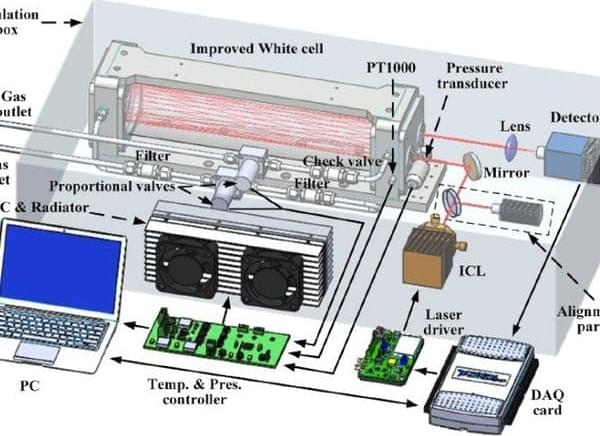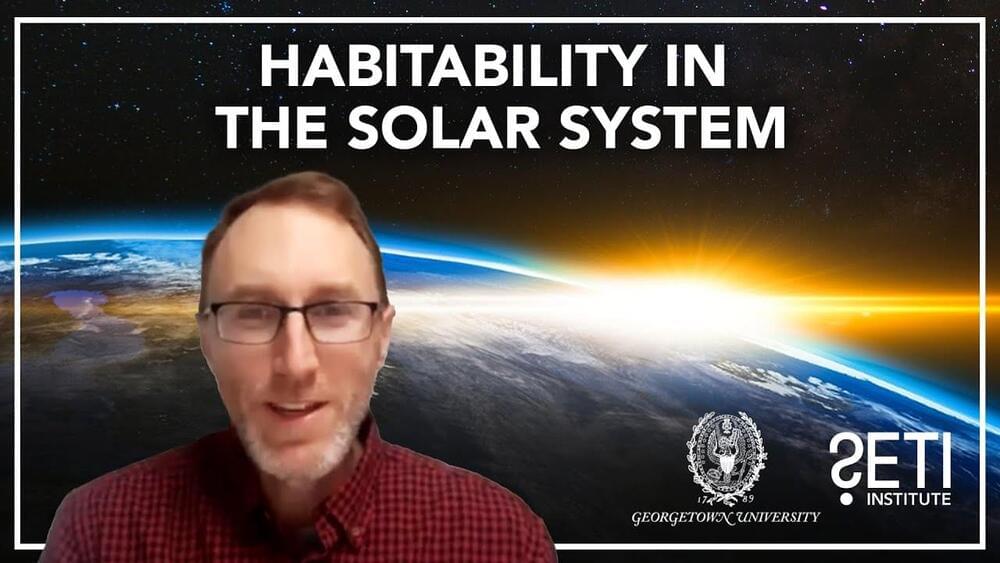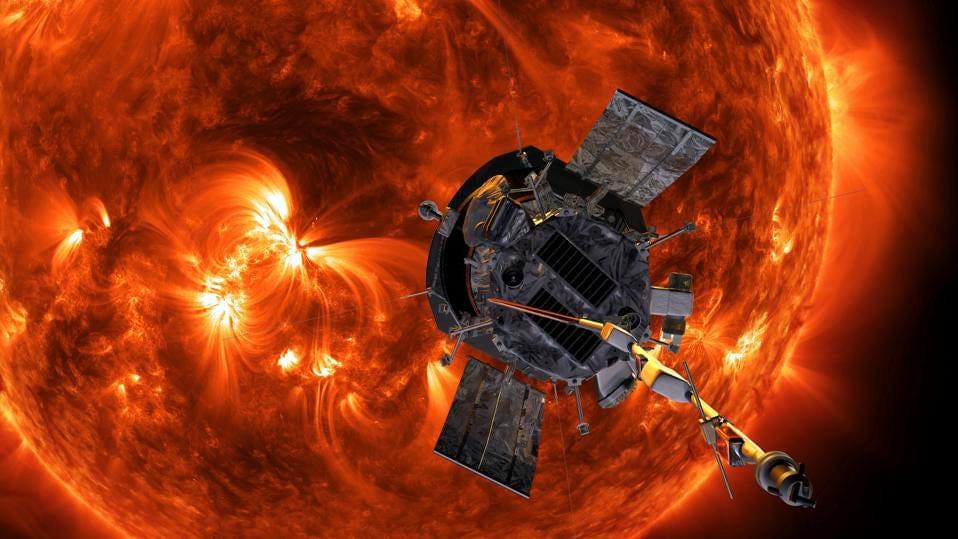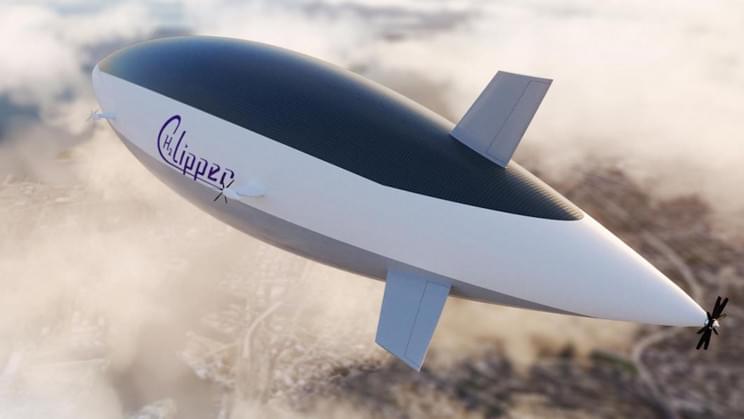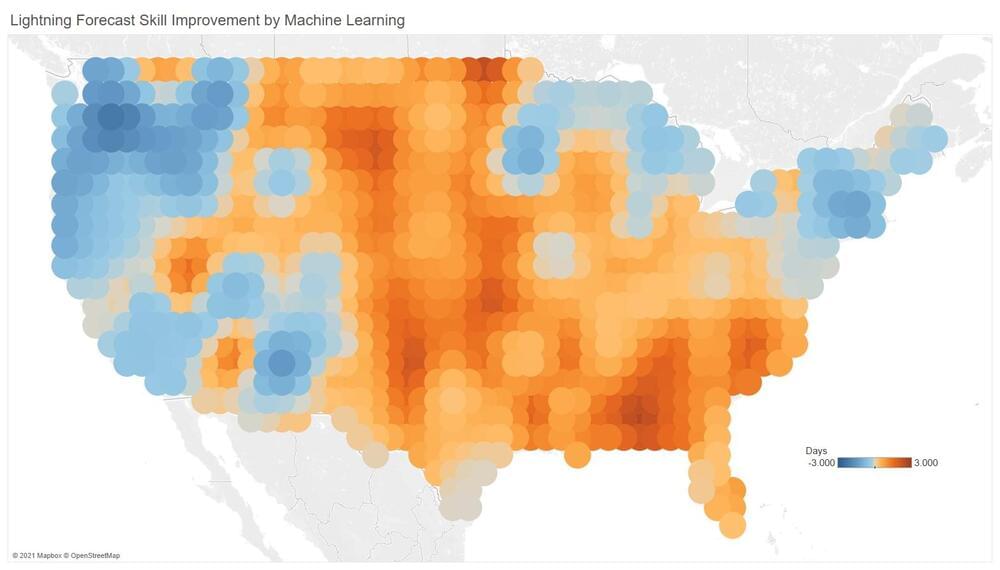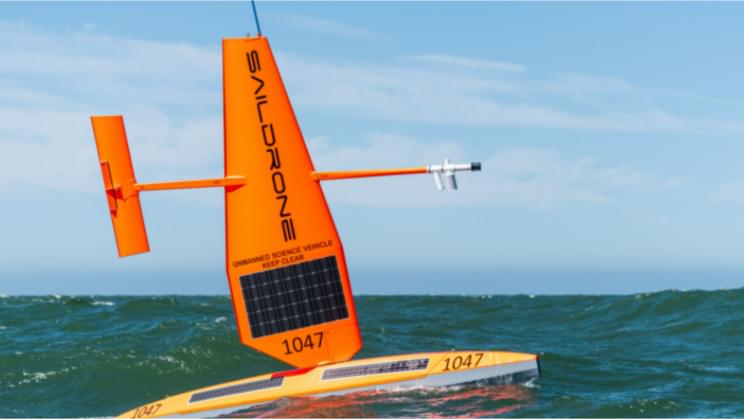Designed for research into climate change this high-precision gas sensor is good to 133 parts per trillion CO and 65 parts per trillion N₂O.
Category: climatology – Page 87
Moderator: Michael Wall.
Panelists: Kennda Lynch, Abigail Fraeman, Morgan Cable.
Part of the Earth at the Crossroads conference held on Nov. 18, 2021.
Tantalizing new discoveries suggest that we are probably not alone in the universe. And yet, as Enrico Fermi first put in 1950: where is everybody? Are habitable worlds rare, unlikely, and therefore cosmically precious? Or is life easily overwhelmed by changing planetary conditions? Do technological societies in particular face an inevitable “Great Filter” that causes their extinction? These questions link the search for extraterrestrial life to the urgent environmental challenges facing our own civilization, from deadly pandemics to human-caused climate change. On November 18th, Georgetown University and the SETI Institute will unite scholars, journalists, artists and activists in conversations that explore what the search for alien life may reveal about the future of life on Earth. These conversations will be open to Georgetown students and will be broadcast to the public. They will culminate in a roundtable debate intended to draft a proclamation on the state of Earth’s environment and its future potential in a cosmic context.
If you like science, support the SETI Institute! We’re a non-profit research institution whose focus is understanding the nature and origins of life in the universe. Donate here: https://seti.org/donate.
For the first time ever, a manmade object has entered the Sun’s outer atmosphere, the corona, which inexplicably is thousands of times hotter than our star’s surface (or photosphere).
Researchers led by a team at the University of Michigan in Ann Arbor were able to predict where the Sun’s upper atmosphere began, and the probe was able to penetrate it for roughly five hours. The Parker probe was not only able to fly through the Sun’s atmosphere but was also able to sample particles and magnetic fields there, says NASA.
“Flying so close to the Sun, Parker Solar Probe now senses conditions in the magnetically dominated layer of the solar atmosphere — the corona — that we never could before,” Nour Raouafi, the Parker project scientist at the Johns Hopkins Applied Physics Laboratory in Laurel, Maryland, said in a statement. “We can actually see the spacecraft flying through coronal structures that can be observed during a total solar eclipse.”
On April 28, 2021, during its eighth flyby of the Sun, Parker Solar Probe encountered the specific magnetic and particle conditions some 8.1 million miles above the solar surface, NASA reports. That point, known as the Alfvén critical surface, marks the end of the solar atmosphere and beginning of the solar wind, says NASA.
The surface of the Sun is about 6,000 Celsius, Justin Kasper, the first author of a paper detailing the research in the journal Physical Review Letters, and a professor of climate and space sciences at the University of Michigan in Ann Arbor, told me. Above that, the temperature rises to more than a million degrees, he says.
They could be “critical in the fight against climate change.”
A California-based startup called H2 Clipper wants to resurrect the hydrogen-filled airship as a form of mass transport. The key difference is that it won’t be transporting people, it will be transporting cargo, a press statement reveals.
The company aims to kickstart a green global cargo network by leveraging the world’s renewed willingness to try alternative forms of transport following the IPCC’s dire climate change report for 2021.
H2 Clipper claims its cargo airships can carry 8–10 times the payload of the best cargo plane over 6,000 miles (9,656 km), and it can do so at a quarter of the price. They will have a payload capacity of approximately 340,000 lb (150,000 kg) sitting in up to 265,000 cubic feet (7,530 cubic meters) of cargo space.
As for speed, the H2 Clipper would travel at a cruising speed of 175 mph (282 km/h), meaning it would move close to ten times faster than a cargo ship — though it would obviously lag behind a cargo plane in that department. The main advantage over today’s cargo planes is that the H2 Clipper produces zero carbon emissions.
Climate Emergency Basics.
Most people now accept that things are out of balance, and it is only those with warped agendas or a lack of understanding that are left behind.
Use these ten facts as starting points with which to move forward.
Use your vote, where you have one, in politics, the boardroom or a shareholders meeting to push for change in the right direction.
Use your money to buy goods and services from those making the right decisions to make the future cleaner, renewable and sustainable.
Finally, USE YOUR VOICE. Talk to everyone and share these thoughts, and challenge misinformation when you hear it being spread.
We can create a better future.
We waste billions subsidising fossil fuels when we could be scaling renewables and developing alternatives faster.
The more people vote for those with net zero policies and buy from those with net zero aims and ambitions, the sooner the balance will tip and momentum will do the rest.
If you want to see some ideas for how we move forward to solve these issues then watch this video next smile Can we save our planet?
https://youtu.be/qxY0p1MqjJs.
Idea based upon content from the book.
Billionaire Elon Musk is pushing ahead with an attempt to utilize emissions contributing to climate change, tweeting that his rocket company will launch a program to remove carbon dioxide from the atmosphere and use it to power spacecraft.
The chairman and chief executive officer of Space Exploration Technologies Corp., Musk announced the project on Dec. 13, shortly after being named Person of the Year by Time magazine.
Lightning is one of the most destructive forces of nature, as in 2020 when it sparked the massive California Lightning Complex fires, but it remains hard to predict. A new study led by the University of Washington shows that machine learning—computer algorithms that improve themselves without direct programming by humans—can be used to improve lightning forecasts.
Better lightning forecasts could help to prepare for potential wildfires, improve safety warnings for lightning and create more accurate long-range climate models.
“The best subjects for machine learning are things that we don’t fully understand. And what is something in the atmospheric sciences field that remains poorly understood? Lightning,” said Daehyun Kim, a UW associate professor of atmospheric sciences. “To our knowledge, our work is the first to demonstrate that machine learning algorithms can work for lightning.”
After dozens of tornadoes sweep through nine states, here is a look at the worst tornado outbreaks on record.
ABC News Live Prime, Weekdays at 7 EST & 9 EST
WATCH the ABC News Livestream: https://bit.ly/3rzBHum.
SUBSCRIBE to ABC News: https://bit.ly/2vZb6yP
WATCH MORE on http://abcnews.go.com/
LIKE ABC News on FACEBOOK: https://www.facebook.com/abcnews.
FOLLOW ABC News on TWITTER: https://twitter.com/abc.
#ABCNLPRIME #Tornados #ByTheNumbers
The same Saildrones captured the first-ever video from inside a major hurricane from sea level in September.
Six autonomous Saildrones are taking off on a six-month journey to tackle some of Earth’s most challenging ocean conditions, in order to improve climate change and weather forecast computer models, reported CNN.
They will travel to the Gulf Stream throughout the winter months where they will collect data about the process by which oceans absorb carbon (carbon uptake). So far, the numbers on this type of activity have only been estimates produced by statistical methods that cannot, therefore, be relied upon.
“This Saildrone mission will collect more carbon dioxide measurements in the Gulf Stream region in winter than has ever been collected in this location and time of year,” said Jaime Palter, a scientist at the University of Rhode Island who is co-leading the research.
“With this data, we will sharpen our quantification of ocean carbon uptake and the processes that enable that uptake in this dynamic region.”
What’s needed instead is something more like the engineering that goes into a race car, where the initial design is as perfect as the engineers know how to make it upfront, but every few laps during a race, they fine-tune it further for the specific conditions on the track that day, Venne said. His inspiration for a solution that is less labor-intensive than car racing also comes from the world of automobiles — specifically self-driving cars.
In addition to knowing the basic rules of the road, a self-driving car needs to be able to adapt to the unexpected, such as swerving to avoid hitting the squirrel crossing the road ahead, Venne said. “It occurred to me that if we’re doing this with cars, we should be able to do the same with the technology that drives the mechanical side of the building.”
BrainBox AI focuses primarily on controlling the heating, ventilation, and air conditioning (HVAC) systems within a building, which accounts for the majority of the energy consumption in most buildings, Venne said. A next-level goal is to get multiple neighboring buildings in a city working in tandem to produce better results, like helping utilities balance the consumption of electricity during periods of peak demand. A pilot project based on that concept won a Tech for Our Planet challenge at the recently concluded COP26 United Nations conference on controlling climate change.
